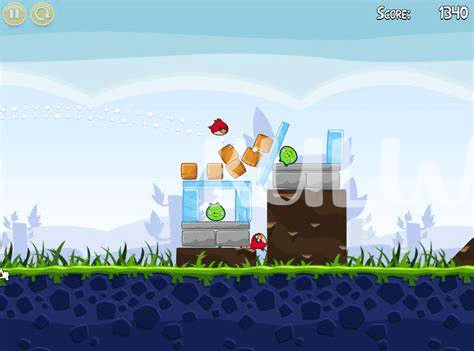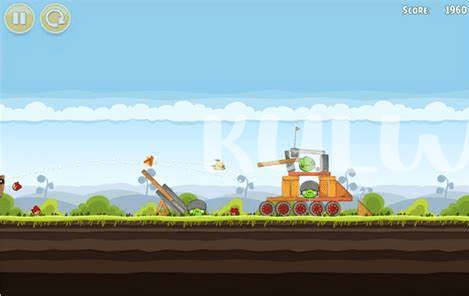The Secret Physics of Angry Birds’ Flight
Ever noticed how some birds in Angry Birds seem to go crazy far while others don’t? That’s all about the secret sauce behind how these feathery friends fly. Think of it like a slingshot – the angle and the oomph you put into dragging it back decide how far and high your birdie buddy will soar. 🚀 It’s not just random; it’s about hitting that sweet spot where power and angle meet. And if you really get into it, you start feeling like a crypto “whale,” making big moves with just a flick of your finger.
Now, here’s the thing; different birds have different weights, wich means they don’t all fly the same way. It’s a bit like in the crypto world – not all coins are Bitcoin Maximalists. Each bird in the game is kind of like a different asset in your portfolio. Some are heavy hitters that can bust through obstacles (think HODL-ing for major gains📈), while others take a bit more finesse and strategy. It’s definalty a crash course in physics, without all the headache of a classroom lecture. You get to experiment with real-world principles like trajectory and velocity, all while aiming to topple those pesky pigs. It’s a lesson in cause and effect, with each launch teaching you a bit more about how the world works – even if it’s in a game.
| Bird Type | Special Power | Physics Lesson |
|---|---|---|
| Red | None | Basic Projectile Motion |
| Chuck | Speed Boost | Acceleration |
| Bomb | Explosion | Energy Conversion |
| Matilda | Egg Drop | Vertical Motion |
How Gravity Plays a Major Role in Gameplay
In the zany world of Angry Birds, you may think it’s all fun and feathers, but there’s some serious physics at play, specifically gravity, wich pulls our feathery friends back down after each launch. Just like in real life, what goes up must come down, making gravity a game-changer for players aiming to smash those pesky pigs. The game cleverly teaches players about gravity’s pull, without them even realizing they’re getting a lesson in physics. It’s like learning how to navigate the market trends without becoming a bagholder, subtly educating through gameplay. Every fling of the bird, every topple of the structures, serves as a vivid, interactive lesson on gravitational force. Now, for those looking to embark on another adventure, tapping into a different kind of digital magic, check out https://iosbestapps.com/crafting-the-perfect-one-piece-adventure-on-your-iphone. Whether you’re strategizing in Angry Birds or crafting adventures, it’s all about the right move at the right time.
The Role of Trajectory in Hitting the Target
Imagine you’re using a slingshot to launch birds across the screen, aiming for those pesky pigs. It looks simple, right? But there’s a whole lot of thinky-stuff, like physics, secretly guiding everything. When you pull back that slingshot and let go, the bird zooms off in an arc. That curved path? It’s all about trajectory. Think about it like throwing a basketball into a hoop. The angle you choose and the power behind your shot determine whether you score or miss. And in Angry Birds, it’s no different. You’ve got to figure out the best arc to make sure your bird hits the target. Plus, every type of bird acts a bit differently, so you have to adjust your game plan. It’s like the game’s giving you a fun crash course in physics without you even realizing it. So, next time you’re launching those birds, remeber, there’s a bit of a brain workout going on beneath all that smashing and crashing. And hey, it’s not just about knocking over pigs; it’s about learning some cool science stuff along the way.
Understanding Elasticity with the Slingshot Launch
When we think about flinging birds across our screen, we’re not just having fun; we’re delving into some pretty cool science stuff. The slingshot in Angry Birds isn’t just a game tool; it’s a perfect example of how elasticity works. Imagine you’re using ipad guitar tuner best app to tune the strings to just the right note. Similarly, pulling back the slingshot requires the right amount of force—it’s got to be just enough so when you let go, the bird launches towards the pigs with the perfect speed. If the slingshot was too stiff, like a diamond hands’ resolve not to sell, or too loose, resembling paper hands panicking at the first sight of trouble, hitting those pesky pigs would be much trickier. This game sneakily teaches us about potential and kinetic energy without us even realizing it. Every time we pull back that slingshot, we are setting the stage for a physics experiment, calculating the best angle and force, hoping not to end up with egg on our face or, worse, becoming a bagholder with a failed shot. It’s like the game’s saying, “DYOR before you launch,” ensuring we think before we act, much like in real life.
The Impact of Different Bird Types on Physics
In Angry Birds, each bird comes with its own set of physics rules, acting like it’s got a unique personality in the physics world. Think of the classic red bird as your straightforward friend who’s all about the direct approach, or the blue bird that splits into three, teaching a lesson in multiplication and coverage area with a touch of whimsy. 🐦💥 Gravity remains constant, but how these birds react to the slingshot’s pull, their air time, and impact – it’s all about diversity. It’s like having diamond hands in a volatile crypto market; you’re prepared for any outcome, hoping your strategic launch pays off. Some birds can boomerang back, defying your initial thoughts on trajectory, while others, like the explosive black bird, bring a bang that can teach you about force and energy in a most unforgettable way. This gameplay element isn’t just for kicks; it’s a physics class in disguise, challenging players to think about elasticity, projectile motion, and strategy. And sure, sometimes we end up being the bagholder with a miscalculated launch, but that’s all part of the experiance.
| Bird Type | Special Ability | Physics Lesson |
|---|---|---|
| Red Bird | None | Basic Projectile Motion |
| Blue Bird | Splits into three | Area Coverage |
| Black Bird | Explodes | Force and Energy |
| Boomerang Bird | Returns on its path | Advanced Trajectory |
Real-world Physics Lessons from a Digital Game
Angry Birds might just seem like a game where you sling birds at pigs, but it’s actually a sneaky lesson in physics. Who would’ve thought playing on your device could teach you about the world? For starters, every launch in the game is a lesson in angles and energy. The way you pull back the sling and choose your aim? That’s all about understanding how forces work together. Plus, the different bird types? They’re like a crash course in how weight and speed affect motion. It’s like the game is saying, “Hey, check out how cool physics can be!” And if you’re into more than just flinging birds on your screen, maybe you’re looking for something else to challenge your brain. In that case, consider checking out ipad poker best app for a different kind of strategy and thrill. It’s fascinating how games like these can turn us into armchair physicists, practicing concepts like trajectory and elasticity without even realizing it. Next time you’re about to launch a bird, remember it’s not just a game, it’s a mini physics lab on your screen—minus the homework and with way more explosions.





